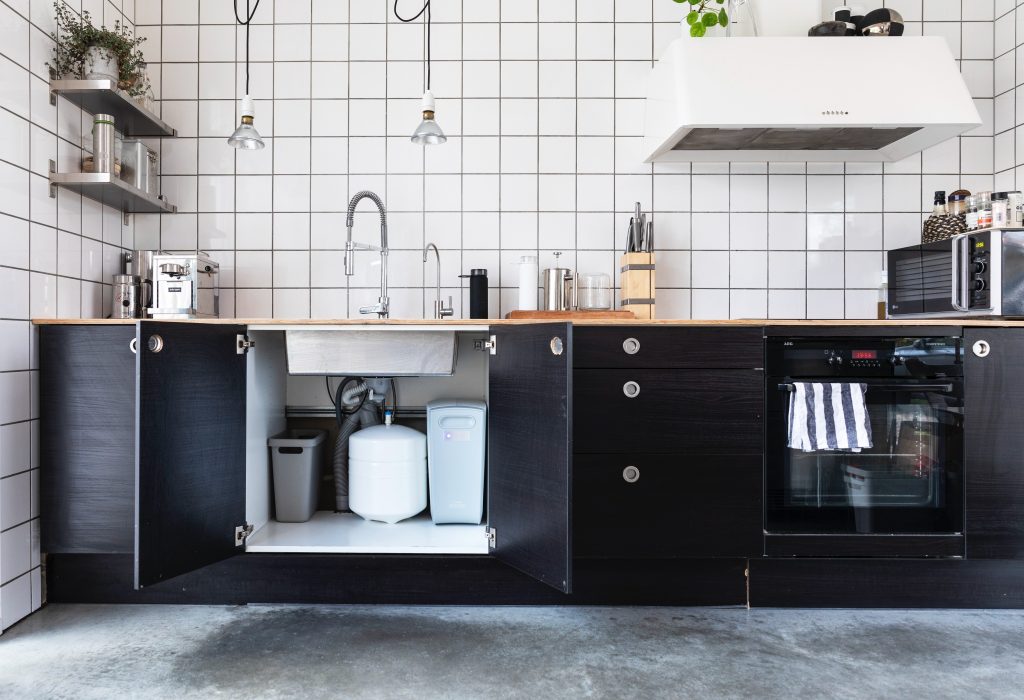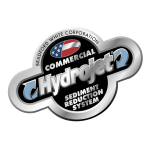For many home and property owners, water softeners play a major role in keeping the water in plumbing systems easy to use and clean. This is especially true in rural areas and mountainous regions like Missoula, where hard water is more common.
Hard water is full of calcium or magnesium, which can cause a build-up of limescale in your pipework and appliances. The harsh minerals can interfere with soap’s ability to clean your clothes, dishware, and body and may eventually cause damage to surfaces, clothing, and plumbing fixtures.
While a water softener helps combat hard water issues, neglecting regular water softener maintenance can cause your system to break down early. That’s why we’ve outlined this guide to help you keep your softener system up and running.
What is a water softener?
A water softener is a particular device that removes harsh minerals, like calcium and magnesium. There are several types of softener systems, but in many cases, resin beads inside the system trap the minerals and exchange them for potassium or sodium.
Water softener systems have three main components:
- The bypass valve
- The resin tank
- The brine tank
Each component plays a vital part in the function of the water-softening process.
Water softener maintenance
Most modern water softeners require very little maintenance and last for years; however, frequent maintenance checks and cleaning are recommended to ensure your system enjoys a long lifespan.
Here’s a guide on how to maintain a water softener system:
The brine tank
The brine tank is a container that holds salt and water. When the system needs to regenerate, the salt and water mix to create a brine solution that helps clean the hard minerals from the water.
Check the salt levels once a month. The owner’s manual should detail the necessary salt level; however, a good rule of thumb is to fill the tank halfway with salt and keep it three inches above the water level.
While some homeowners can do this themselves, it’s always a good idea to allow a trained plumber to adjust salt levels in your tank to ensure proper levels.
Types of softener salts
Here are three types of salts you can add to your water-softening system:
- Granular salt
- Tablet salt
- Block salt
Granular salt is considered the most popular due to its solubility (ability to dissolve in water). If possible, buy it in pellet form, as ordinary salt crystals can clog your tank.
You can choose between a few different salt grades as well:
- Evaporated salt – the highest-quality option but also the most expensive.
- Rock salt – also known as coarse salt. This is cost-effective but often contains more contamination which can make your tank dirty and result in more cleaning.
- Solar salt – This is purer than rock salt, which minimizes brine tank residue.
What to do if the salt forms a bridge in the tank
Water softener salts often form a solid layer inside the brine tank known as a salt bridge. A salt bridge stops the loose salt on top from mixing in with the water, which can prevent the softener from working correctly.
Here are a few ways to break up a salt bridge:
- First, using a long pipe, push around the center of the brine tank to break up any solids that have formed.
- Next, pour hot water over the salt bridge to break it up.
- If you have recurring problems with bridging, consider using less, and allowing the salt to sink lower between refills.
The salt may clump together, forming a pile at the base of your tank. This can cause the water to flood around it instead of mixing correctly. To break this up, you can use a long pipe. It also helps to scoop the pile out, allowing it to dissolve in hot water, so you can pour the solution into the tank.
Cleaning your system
You don’t need to clean modern water softeners every year. Most systems can go without washing for 5 to 10 years.
However, try the maintenance steps mentioned above if you notice your water becoming harder. If that doesn’t work, consider cleaning your water softener. Here’s how to service water softener systems in your home:
Empty your tank
Shut off the water by closing the bypass valve, dump out all of the water, and throw away the salt. Be sure to keep the softener salt away from plants, as it will kill them.
Remove the brine grid
Take off the brine grid from the base of the tank and remove any mesh platform before cleaning.
Clean with soap and vinegar
Mix a generous amount of dishwashing soap with a gallon or two of warm water, then pour it into your tank and let soak for about five minutes before scrubbing the entire tank vigorously. Next, dump out the soapy water, and rinse with plain water.
Once the tank is cleaned with soap and water, use a vinegar solution of ½ cup of vinegar and two to three gallons of water. Stir into the tank and allow it to sit for 15 minutes for sanitization. Depending on how severe the build-up of dirt or limescale is, you may need to increase the ratio.
¼ cup of bleach can also be used in place of vinegar but it can be harmful to the environment and nearby rivers so we recommend using vinegar.
Rinse and refill
Rinse the vinegar solution and replace the grid. Next, add water and salt as per your water softener manual. Give the salt a few hours to dissolve before regenerating the tank.
Routine upkeep that should be completed every few months
The following is a list of water softener maintenance that should be done every few months to ensure your system functions properly:
- Use the valves – once a month, turn the bypass valves off and on to keep them in good working order.
- Pour water softener cleaner into the brine tank – do this before a scheduled regeneration process or start a manual one after pouring the cleaner in.
- Clean the brine to resin valve – twice yearly disassemble and clean the valve between the brine and resin tanks. Ensure to follow the manual’s instructions; forgetting to relieve water pressure before disassembly can be dangerous.
Maintenance checks if you notice hard water
If you have tried the above and are still getting hard water, try these options:
- Fix any water pressure issues.
- Check that the bypass valve is open, the hoses aren’t kinked, and the timer is set correctly for regeneration.
- If there is a spike in water use or your water has become harsher than normal, set the timer to regenerate more frequently.
- Check the circuit power, wires, and fuses if the display isn’t showing.
- When in doubt, call a professional for assistance.
For the best maintenance for softener systems, call Plumb-Tech.
While water softener system maintenance can be completed on your own, it can seem overwhelming to some homeowners. If you’re uncomfortable performing any of the maintenance tips we’ve listed above, we recommend leaving your plumbing work to trained professionals in order to avoid any expensive mistakes.
At Plumb-Tech, we aim to make your plumbing system function as it should. With almost two decades of hands-on experience, Plumb-Tech is ready to help you with your plumbing needs.
If you live in or around the Missoula area and need maintenance for your water softener system, book an appointment with us today!





